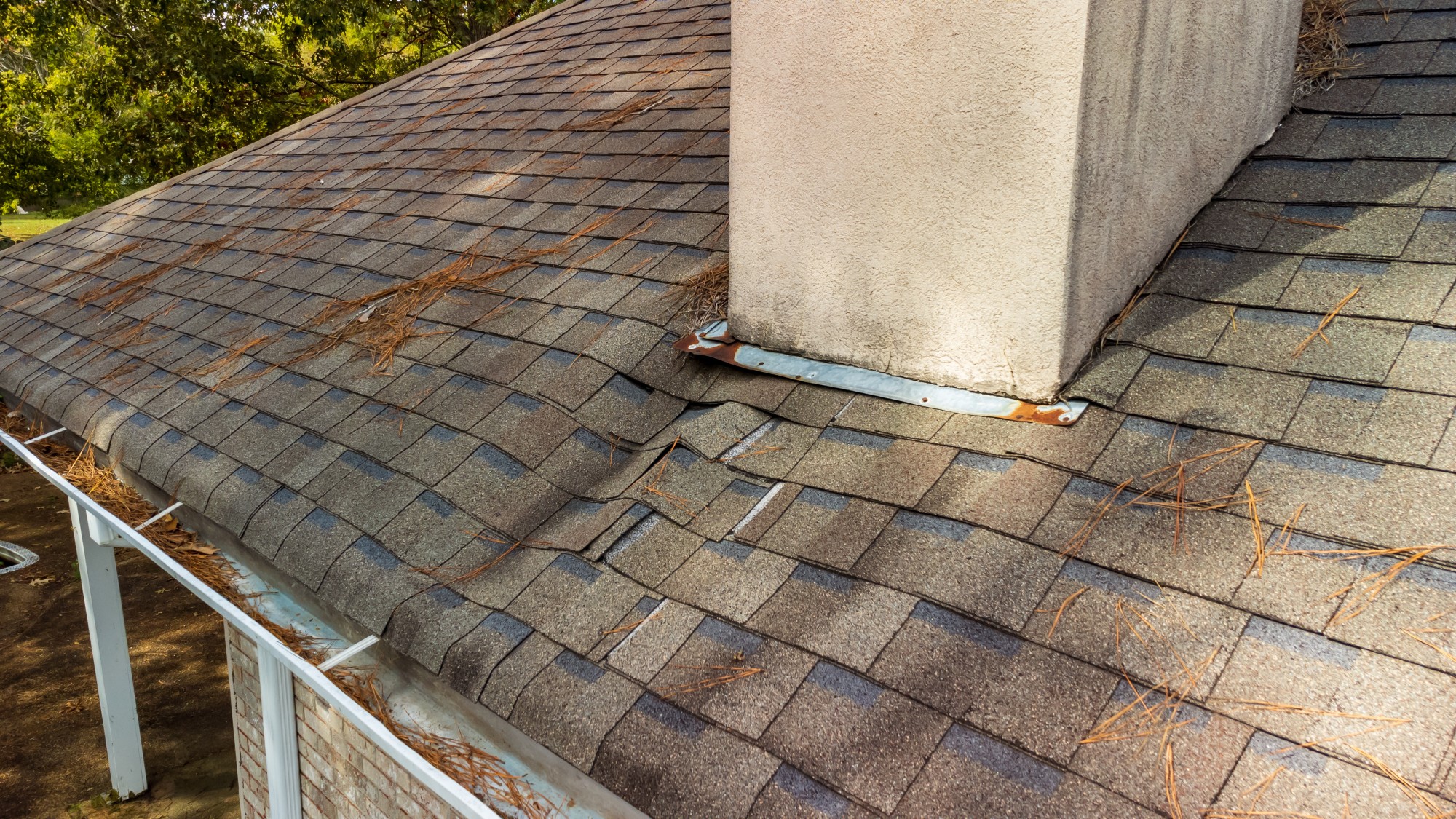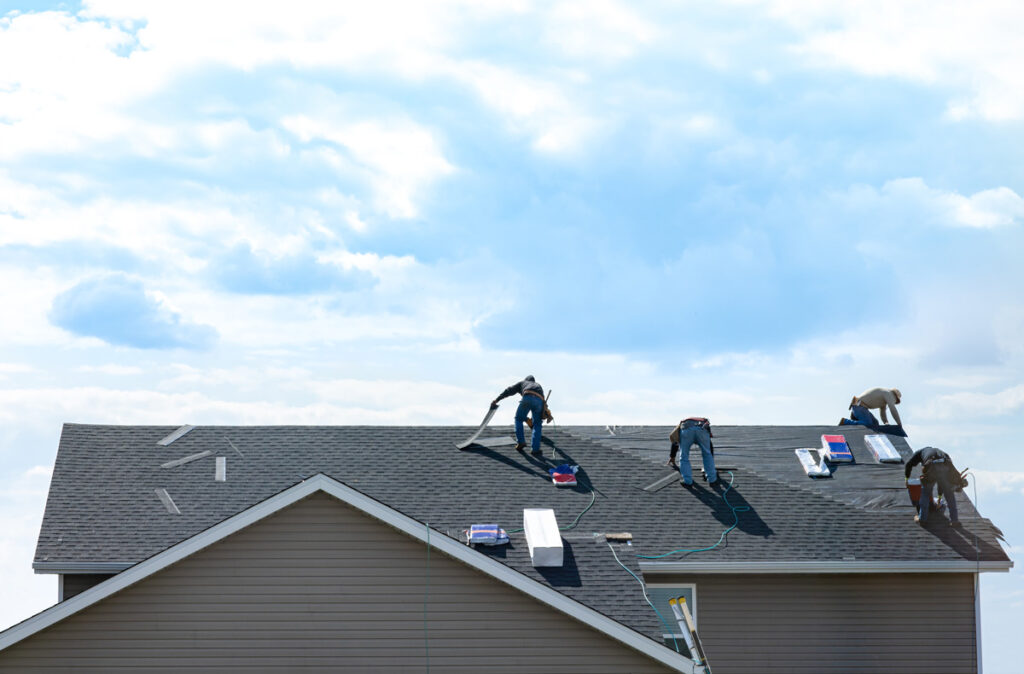Recognizing the Different Kinds of Roofing Systems: A Comprehensive Guide for Homeowners
With an array of alternatives-- ranging from the traditional gable to the modern flat-- each kind offers unique advantages and difficulties that ought to align with the homeowner's details needs and ecological considerations. As we explore the ins and outs of different roof covering types, it comes to be obvious that one size does not fit all; the appropriate choice might shock you.
Saddleback Roof
Saddleback roofs, characterized by their triangular shape, are among one of the most prominent roof designs as a result of their simpleness and performance in dropping water and snow. This design includes two sloping sides that fulfill at a ridge, enabling efficient water drainage and decreasing the danger of water buildup. The steep pitch generally connected with gable roof coverings enhances their ability to handle heavy rainfall, making them suitable for numerous climates.
In addition to their practical benefits, saddleback roofs offer aesthetic flexibility. They can be adjusted to different building designs, from conventional to modern homes. The style can likewise accommodate additional features such as dormer windows, which boost natural light and air flow in the attic room.
Additionally, saddleback roofs give sufficient room for insulation, adding to energy performance. Home owners can pick from a range of roof products, including asphalt tiles, steel, and ceramic tiles, further boosting customization alternatives.
In spite of their benefits, saddleback roofs might call for extra assistance in locations susceptible to high winds or heavy snowfall. Generally, the gable roof covering stays a popular option because of its mix of capability, toughness, and visual allure.
Flat Roofs
Level roofing systems are commonly acknowledged for their minimal design and sensible applications, especially in industrial and industrial setups (oahu roofing). These roofings feature a straight or nearly straight surface, which permits simple building and construction and flexible space usage. While they may lack the visual allure of angled roofs, level roofing systems provide many benefits, particularly in metropolitan atmospheres where optimizing area is essential
One of the primary advantages of flat roof coverings is their availability. Property owners can make use of the roofing space for different functions, such as rooftop gardens, balconies, or photovoltaic panel installations. Furthermore, level roofing systems are normally a lot more affordable to set up and maintain contrasted to their sloped equivalents, as they require less materials and labor.
Usual materials made use of for flat roofings consist of built-up roofing (BUR), changed bitumen, and single-ply membrane layers, each offering unique advantages. Overall, level roofings offer as a practical and versatile selection for many home owners and businesses alike.
Hip Roofing Systems
Hip roofings are characterized by their sloped sides that merge on top, forming a ridge. This style stands out from gable roofing systems, as all four sides of a hip roof incline downwards towards the walls, supplying a much more steady structure. The angle of the slopes can vary, enabling flexibility in building aesthetic appeals and functionality.
One of the main advantages of hip roofing systems is their capability to stand up to hefty winds and adverse climate conditions. The sloped surface areas enable better water drainage, minimizing the risk of leakages and water damage. Furthermore, hip roof coverings offer raised attic room, which can be used for storage and even transformed right into livable areas.
However, creating a hip roof covering can be more pricey and intricate than simpler roof covering types, such as gable roof coverings. The added product and labor associated with producing the inclines and making sure appropriate architectural honesty can cause greater expenditures. In spite of these disadvantages, lots of house owners prefer hip roofs for their longevity, aesthetic charm, and possibility for power effectiveness.
Mansard Roofing Systems
Mansard roofs, commonly identified by their unique four-sided style, attribute 2 slopes on each side, with the reduced incline being steeper than the top. This architectural design, originating from France in the 17th century, is not only aesthetically enticing however useful, as it takes full advantage of the usable area in the upper floors of a building. The steep reduced incline permits even more clearance, making it an ideal option for attics or loft spaces, which can be exchanged living spaces.
Mansard roofing systems are characterized by their adaptability, suiting various architectural styles, from traditional to contemporary. They can be constructed with different products, including asphalt roof shingles, slate, or metal, providing house owners with a variety of options to fit their budgets and preferences. In addition, the design allows for the integration of dormer windows, enhancing natural light and ventilation in the top degrees.
However, helpful resources it is necessary to think about the potential downsides. Mansard roofing systems may need even more maintenance due to the intricacy of their layout, and their steep inclines can be challenging for snow and rainfall drainage. Generally, mansard roofs integrate elegance with functionality, making them a popular option among house owners looking for distinct architectural functions.
Shed Roofs
As homeowners progressively seek simplicity and capability in their architectural styles, lost roofing systems have actually arised as a preferred option. Identified by a single sloping airplane, a shed roof offers a minimalist visual that matches numerous home designs, from modern to rustic.
One of the key benefits of a shed roofing is its simple building, which typically equates to lower labor and product costs. This style permits efficient water drain, minimizing the danger of leakages and water damages. Additionally, the vertical slope gives ample room for skylights, boosting natural light within the inside.
Lost roofing systems likewise supply flexibility in terms of usage. They can be properly integrated into additions, garages, or outside structures like pavilions and sheds. Furthermore, this roof covering style can accommodate numerous roofing materials, including steel, asphalt shingles, or perhaps environment-friendly roofs, straightening with environment-friendly campaigns.
Nonetheless, it is vital to take into consideration local climate conditions, as heavy snow loads might necessitate changes to the roofing's angle or framework. Overall, lost roofing systems offer a practical and aesthetically pleasing choice for home owners aiming to make best use of performance without jeopardizing design.
Conclusion


Gable roofings, defined by their triangular form, are amongst the most popular roof covering styles due to their simpleness and effectiveness in losing water and snow. oahu roofing. The high pitch typically linked with gable roof coverings enhances their capability to handle hefty rainfall, making them ideal for various environments
While they may do not have the visual appeal of pitched roofing systems, level roofings supply countless advantages, particularly in city atmospheres where optimizing room is visit this page essential.

Comments on “Roofing Oahu: High Quality Providers for Sturdy Roofs in Oahu”